Somerset this week: 7 March 2025
Somerset Council sets a budget, Yeovil awaits a "meanwhile" decision, a misuse of statistics, Labour fails to understand neighbourhoods in the south west and the continued decline of local newspapers.
Dear readers
As ever our weekly news update is provided free for all our readers.
The only way we can offer you a free news service, is by providing a paid for service alongside it. Without the paid for bit, the free bit could not exist. So can we tempt you?
To sign up for a paid membership for a year would cost you £30 - that’s 58p a week. What will we give you for that?
To start with at least 48 extra articles, investigative or analytical pieces
Access to our entire back catalogue. It is a pretty large back catalogue these days and you can find material by using the search function in substack.
The ability to comment on our articles
The pleasure of supporting one of Somerset’s last and most innovative independent news outlets
If that sounds interesting, please do join us. You can sign up here:
Thank you
Andrew Lee - editor
Ugly - but approved
That Somerset Council is in a financial crisis is hardly news. Yesterday, the council debated a budget that will balance for 2025/26 but only with a 7.5% council tax rise and the help of a £43m capitalisation directive.
Next year the gap the council has to fill is already over £100m.
So serious times. And yet….The tone of the debate about the budget had more in keeping with pantomime season. Councillors name-called, point-scored and generally created something ugly enough for pantomime sisters or a duckling.
Does anyone really care what LibDem Cllr Ross Henley was doing in 2008?
Why would councillors want to vote down an entire budget because they were upset about car parking charges?
Have all the LibDems forgotten that they were in the coalition government that cut local government funding from £30.7bn (2010/11) to £13.2bn (2015/16)? Not all as it turns out. But only LibDem Cllr Tom Deakin had the honesty to recognise that it was central government of all colours, including his own party, that had messed up local government finance.
Some serious points were raised. Cllr Leigh Redman pointed out that a report, recently received from the Ministry of Housing and Local Government about Somerset’s budget, had not been seen by councillors. What did the report say? What additional points was it recommending?
Although it hadn’t been published, Somerset Council’s CEO Duncan Starkey had seen it. But nobody else. Might the letter make recommendations for further cuts? Shouldn’t all councillors know what was in the letter?
He was told that the report was a government report and it was not in the gift of Somerset Council to publish it. Which is fair comment. But also did not explain why councillors should vote on a budget with some very significant questions unanswered.
The vote itself was a theatrical farce. No doubt councillors will protest that they all voted with their conscience and that they were not “whipped”. But it is a fact that all the LibDems voted for the budget, while all the Labour and Conservative councillors voted against. And although she could hardly be whipped, so too did the sole Reform UK councillor, Bente Height.
Only the Greens offered vaguely differing opinions – two councillors voting against and two councillors abstaining.
The budget was approved with 59 in favour, 34 against and two abstentions
The budget was approved with 59 in favour, 34 against and two abstentions. Somerset Council lives to fight another day. Leader of Somerset Council, Cllr Bill Revans, greeted the vote with these words: “With costs and demand for our services continuing to soar, we have had no choice but to ask the Government for Exceptional Financial Support. But let’s be clear, this is not a bailout or a long-term solution. We are asking our residents to pay more, and we will be required to sell our assets or borrow money to cover every day running costs.”
For the Conservatives, Opposition Leader Mandy Chilcott observed: “I voted against the excessive 7.49% increase in Somerset Councils Council Tax today. Household budgets are under pressure right across Somerset and adding this increase to the rising cost of fuel bills, food and inflation will, for some, be more than they can afford to pay. This will not go anywhere near filling the black hole in the budget as the financial position remains ‘critical’.”
We’ll have more on the details behind the collapse of Somerset Council’s finances and what did or did not contribute to them in the course of the next couple of weeks.
Meanwhile in Yeovil
We have reported several times on the future of Yeovil’s Glovers Walk and what it will mean for the town. Regular readers will recall that the final and rather late part of Yeovil Refresh, the amphitheatre in the Triangle, has now been delivered. But no sooner had it been delivered than the land next to it, Glovers Walk, was bought by Somerset Council and scheduled for demolition.
The largely empty shopping centre had become an eyesore and few will mourn its passing. But it will leave the completed amphitheatre next to a demolition site.
Bearing all that in mind, Somerset Council are promoting a “meanwhile” use for the area so as to make the town centre more attractive until the rebuilding of the Glovers Walk area can begin.
So far so sensible.
But the dates, the plans and the time gap between demolishing Glovers Walk and building something better are all starting to sound a bit fluid.
The first obvious question is how long will this “meanwhile” use be for? The answer is still a bit vague – anything from one to three years. The fact is that once the longer-term plans for the site are firmed up and approved, construction will begin and the “meanwhile” use will come to an end. That will, inevitably, lead to a long period when the area is a building site but that much is unavoidable.
And once again a desolate surrounding will be there to remind people of all the money that has been poured into the Triangle to turn it into an amphitheatre.
The Council’s spokesperson told us that long-term plans for the former Glovers Walk site will be formulated: “with an ongoing programme of engagement over the coming 12 to 18 months with residents, businesses, local groups and organisations and the wider community.”
The sharper-eyed among you will have realised that if it is expected to take 18 months minimum to finalise plans, so at least the “meanwhile” use is unlikely to be for just a year.
Which is just as well, because progress towards deciding what that use will be has been at a snail’s pace. Bear in mind demolition of the site is already well advanced.
So where are the plans for the “meanwhile use”? The spokesperson told us: “An initial public engagement survey was completed at the end of 2024. This focused on seeking ideas for meanwhile uses for the site…..”
“No decisions have yet been reached.”
That did not sound encouraging. Especially when we were told: “No decisions have yet been reached.”
However, the spokesperson added: “As a blank canvas, it is vital that the planned programme of engagement for the development of the site is completed, so that the views and needs of local people in the wider Yeovil community are properly considered and reflected. A full report on the survey and consultation representing the public's views will be presented to Somerset Council by the end of March with recommendations on the meanwhile use plan and further long term suggestions for Glovers Walk.”
Realistically, that means a decision will be taken in April. Work will then have to commence to deliver whatever the agreed “meanwhile” use is. Based on the speed (or lack of it) with which Yeovil Refresh was completed, whatever scheme is suggested is unlikely to be complete until the end of the summer.
By which time we will be some eight or nine months into the period of one to three years estimated for the “meanwhile” use. Which begs the question, is it worth it? At three years, you’d probably say yes. At 2 years, perhaps not.
To answer that conundrum, the obvious missing piece in the puzzle is how much will this “meanwhile” use cost. Especially for a council that can barely balance its books and which, the S151 officer says, is highly unlikely to be able to balance them for 2026/27.
So it was not a big surprise to learn that: “This is dependent on the current budget setting process so we will confirm once this has been concluded.” Quite so.
Meanwhile work continues on drawing up plans for the “meanwhile” use. The ideas are being pulled together by a “place-making” expert going by the remarkably apt name of Dr Courage!
More or less – 3
The latest in our tribute to Radio 4’s statistical programme led by the estimable FT journalist Tim Harford looks at the issue of school choices.
It is that time of year when children (and parents) find out if they will be going to the secondary school of their choice. And Somerset Council are trumpeting another successful year.
Perhaps that is not surprising as the number of secondary school applications was 4,743, down from 4,772 in 2024. It is inevitably easier to place children in the school of their choice if there are fewer applications.
In total, we are told, 92.43% (4,384) of children received a place at their first preference school, with 96.96% (4,599) offered one of their top three choices. Which sounds impressive.
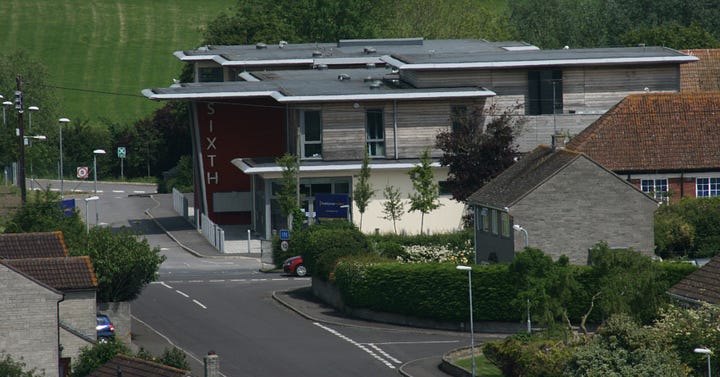
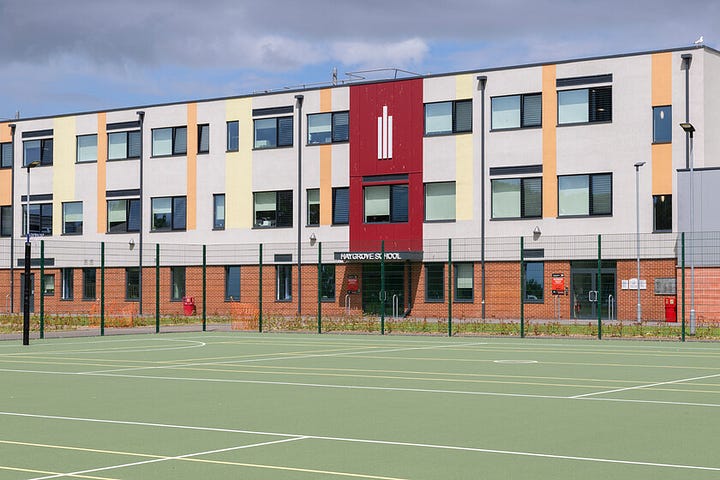
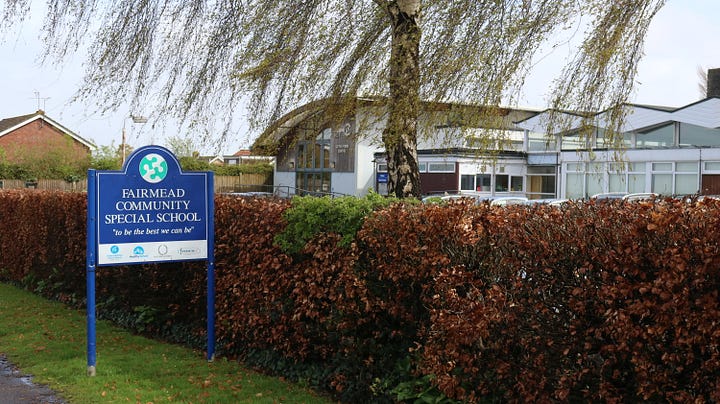
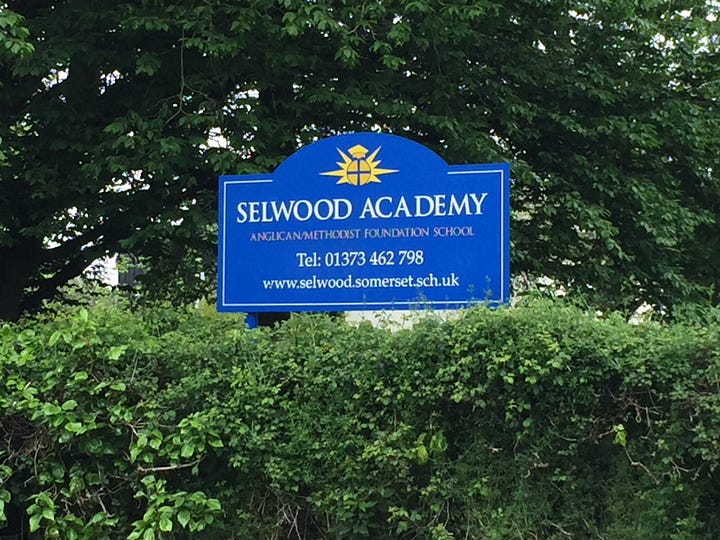
Especially when we are also told that the national average for children getting their first choice of school is just 82.9%. Well done Somerset Council.
But wait a moment. Why are we told the number of pupils who applied last year compared to this, but not the percentage who got their first choice?
Our regular readers will have already got to the answer several steps ahead of us. Because last year 93.56% of pupils got their first choice of school and 98.15% got one of their first three choices.
the performance for this year is actually somewhat worse than last year
So the performance for this year is actually somewhat worse than last year, despite there being fewer applications. It is still an excellent result when compared with the rest of the country, but perhaps a little more honesty about why the performance is notably worse than last year might not go amiss?
Then we wondered how this result compared with our Somerset neighbours?
So we asked how Bath & North East Council did with their school applications. For the 2025/2026 academic year 98.6% received one of their overall preferences (compared to 96.96% in the Somerset Council area). Of those, 92.7% were offered their first preference school, very similar to the result for the Somerset Council area.
It was the same with North Somerset Council who also did rather better at offering children one of their top three preferences. The Council offered 97.9% of their students one of their first three preferences, again somewhat better than Somerset Council. However, although the numbers for children offered their first choice were similar to BANES and Somerset Council, North Somerset was the worst performer (with 92.38%) for giving children their first choice.
It is nevertheless good to know that all three councils comfortably exceed the national average when it comes to giving children the secondary school of their choice. We’ll give the final word on this matter to Cllr Heather Shearer, Lead Member for Children, Families and Education at Somerset Council: “Somerset Council is here to support young people throughout their education journey. We are proud to be able to offer so many pupils their preferred secondary school place – achieving a first preference acceptance rate significantly higher than the national average (82.9% in 2024/25) for another year running. I wish all pupils and their families the best of luck in this next important chapter.”
And let’s hope they get a good education in statistics too!
Unneighbourly
If Labour’s landslide in 2024 was expected, if there was any note of surprise it was how well the party performed in the South West, a region traditionally dominated by LibDems and Conservatives. Labour emerged with 24 MPs to the 22 for the LibDems, 11 for the Conservatives and Greens’ 1.
So you might hope that Labour now has a better understanding of the neighbourhood than it did in the past.
New plans for £1.5bn of investment by Government into a Plan for Neighbourhoods were announced earlier this week. The money would be handed out to 75 areas around the country. Local communities and businesses would be asked to get together and plan to use the funds to improve their area.
The scope of regeneration work in the area would include high streets, local parks, youth clubs, cultural venues, libraries and health and wellbeing services. In being spent to regenerate the area, the money would also create jobs, business growth and increase opportunities for local people.
The average award for each of the 75 communities will be £20m. So pretty similar in scope and scale to the town deal project launched by the Conservatives.
So, has the influx of a large number of Labour MPs from the South West made a difference to government understanding of the needs of our area? Er no.
The South West has by far the smallest share of the new fund and the Government could only find one community across the whole region that merited support from the Plans for Neighbourhood funds. And that was Torquay in Devon.
Perhaps the fact that Somerset failed to elect a single Labour MP didn’t help?
A decade of decline (by the editor)
I should state up front that what follows is a news article (about declining newspaper sales), an opinion piece (the importance of the newsletter format) and a sales pitch (we’d like you to subscribe please) all rolled into one. You have been warned and I have declared that which I should.
As someone who was instrumental in setting up and growing a successful hard copy local newspaper (The Leveller), this article is hard to write. However, the facts are inescapable. It is now clear, beyond reasonable doubt, that for local news, hard copy newspaper publishing is all but dead. True The Leveller continues to flourish as The Somerset Leveller, but it is looking increasingly lonely.
A decade ago hard copy newspapers still held their own, still sold plenty of copies and still had support from advertisers. You could not say that today.
In the face of rapidly falling sales, some of those titles have since merged to try and maintain critical mass. The Wells Journal and Shepton Mallet Journal were separate titles, now they are one.
The Central Somerset Gazette has merged with the Cheddar Valley Gazette, the Bridgwater Mercury with the Burnham & Highbridge Weekly News.
It may put off the inevitable for a year or two, but the decline is there for all to see. The latest figures for the number of copies sold of each newspaper title were published last week. These are pretty accurate figures produced by the titles and audited by the Audit Bureau of Circulation or ABC.
In 2014 the Western Gazette reported newspaper sales of 19,724 per issue. The latest ABC figures for 2024 report just 1,789 copies sold per issue.
The Frome Standard now sells just 190 copies per issue (ABC for 2024) and cannot possibly be profitable at that level, given the cost of running a newspaper through a web offset printing press. Conventional wisdom says you need 7,000-10,000 copies per run to make that economically viable. Yet, even back in 2014, it was only selling 4,500 copies per issue.
Things are not much better where titles have merged.
In 2014 the Bridgwater Mercury reported sales of 8,922 copies per issue and the Burnham & Highbridge Weekly News 2,425. The reported sales per issue for the combined paper for 2024 (according to the latest ABC) is 3,004.
It is certainly true that sales of Newsquest titles do seem to have held up better than those of Reach titles across Somerset. The Weston, Worle & Somerset Mercury sold 13,326 copies per issue in 2014 and the latest figures for 2024 report sales per issue of 2,833. That’s more than 20% of the 2014 figure.
That may sound terrible, but bear in mind the Western Gazette is selling just 9% per issue of the sales it made in 2014!
Similarly, the County Gazette, another Newsquest title may only be selling 4,513 copies a week, but that is still some 30% of the sales the paper was making in 2014.
So does hard copy local journalism make sense?
There are some good independent titles out there still. But the big groups that dominate hard copy news publishing (Newsquest, Reach etc) seem to be clinging on desperately.
This comment made in the Reach plc half year results for 2024 speaks volumes: “In Print, circulation revenues have proven again to be a reliable revenue stream and the teams have mitigated the circulation volume headwind with cover price increases, strong promotional activity and standalone products tying into popular events.”
the teams have mitigated the circulation volume headwind with cover price increases
A lot of jargon there. But essentially, we can keep our revenue by ignoring falling newspaper sales and just putting up the price.
There is surely a limit as to how far you can compensate the fall in circulation revenue with increases in the price of a newspaper? When titles like the Frome Standard (190) Somerset Guardian (222) or Wells and Shepton Journal (609) sell copies in the hundreds not thousands, the possibility of circulation revenue being maintained looks to me to be absurdly optimistic.
These titles are all but dead. Keeping them going is, to my mind, the equivalent of vanity publishing in the book trade.
Even so, they have been trying to use cover price increases to offset sales collapse as best they can. The Western Gazette cost just 95p an issue in 2014, today it is being sold for £2.80. Does that stack up to the claims by Reach management?
Not really.
In 2014 they sold 19,724 per issue at 95p. That generated per issue revenue of £18,737. In 2024 they sold 1,789 per issue at £2.80. That generated per issue sales of £5,009.
Clearly the increase in cover price is not, by a long chalk, compensating for the fall in circulation. Copy sales revenue is now less than a third of the 2014 figure.
The same cover price increase trick is being played across the Reach plc portfolio in Somerset. The Frome Standard may only sell 190 copies, but they are being sold for £3 each. As recently as 2020 the Wells Journal would have cost you £1.40 a week. Today you’ll have to shell out £2.85 for the Wells & Shepton Mallet Journal as it has become.
In the face of such catastrophic declines in readership, it is not just that the arrival of digital news has become unstoppable; it has become essential. We were lucky enough to get in ahead of the curve with Somerset Confidential® in 2022.
Many of the offerings online by the large local media companies are at best messy. Blighted with pop-up ads, they are difficult to read and actually, I would suggest, not a very pleasant reading experience.
They also rely heavily on press releases for their routine news coverage.
There is of course another way. It is too early to say if newsletter offerings like Somerset Confidential® are the way forward, but it is starting to look as if it might be. Most importantly this is ad-free journalism. The only revenue is from paying subscribers. It takes journalism back to its purest form. You pay for what you get; it isn’t cross subsidised.
Most importantly, these new publications are independent of the big news groups that traditionally dominated local journalism (Reach, Newsquest etc). That independent voice without ties to advertisers and without a news bias or agenda is important too, I’d suggest.
The conspicuous success of The Mill shows the potential for the format. By the end of 2023 they had managed 2,500 paid subscribers and more than 40,000 free subscribers. Covering the conurbation of Manchester, they have attracted large sums in investment and produced news stories that have made waves.
This is the direction of travel Somerset Confidential® is aiming for. Covering a large rural area such as Somerset is harder, and our growth rate is slower. But I hope you’ll agree having an independent voice in local journalism is important. And keeping the quality of journalism high, avoiding press releases and producing original material based on research and investigation goes to the heart of what good journalism should be. Local or national.
Without a hard copy press, the future is online.
Of course it would be nice to have it free, but journalism costs money. You pay for the BBC through the licence fee. Somerset.Live you pay for through adverts. On Facebook you can find opinions, conspiracies but rarely actual news written by someone who isn’t a keyboard warrior.
There is simply no such thing as free journalism. And no such thing as free news. Which leaves a choice between journalism funded by adverts or journalism funded by readers. Through Somerset Confidential® I’ve tied my colours to the latter mast because it is what I believe is right and the purest form of news reporting.
Some of you are clearly onboard – for which I thank you. In time, I hope to convince many more of you too.
Why not gift a subscription as a present for a friend or family member? You can do that here:




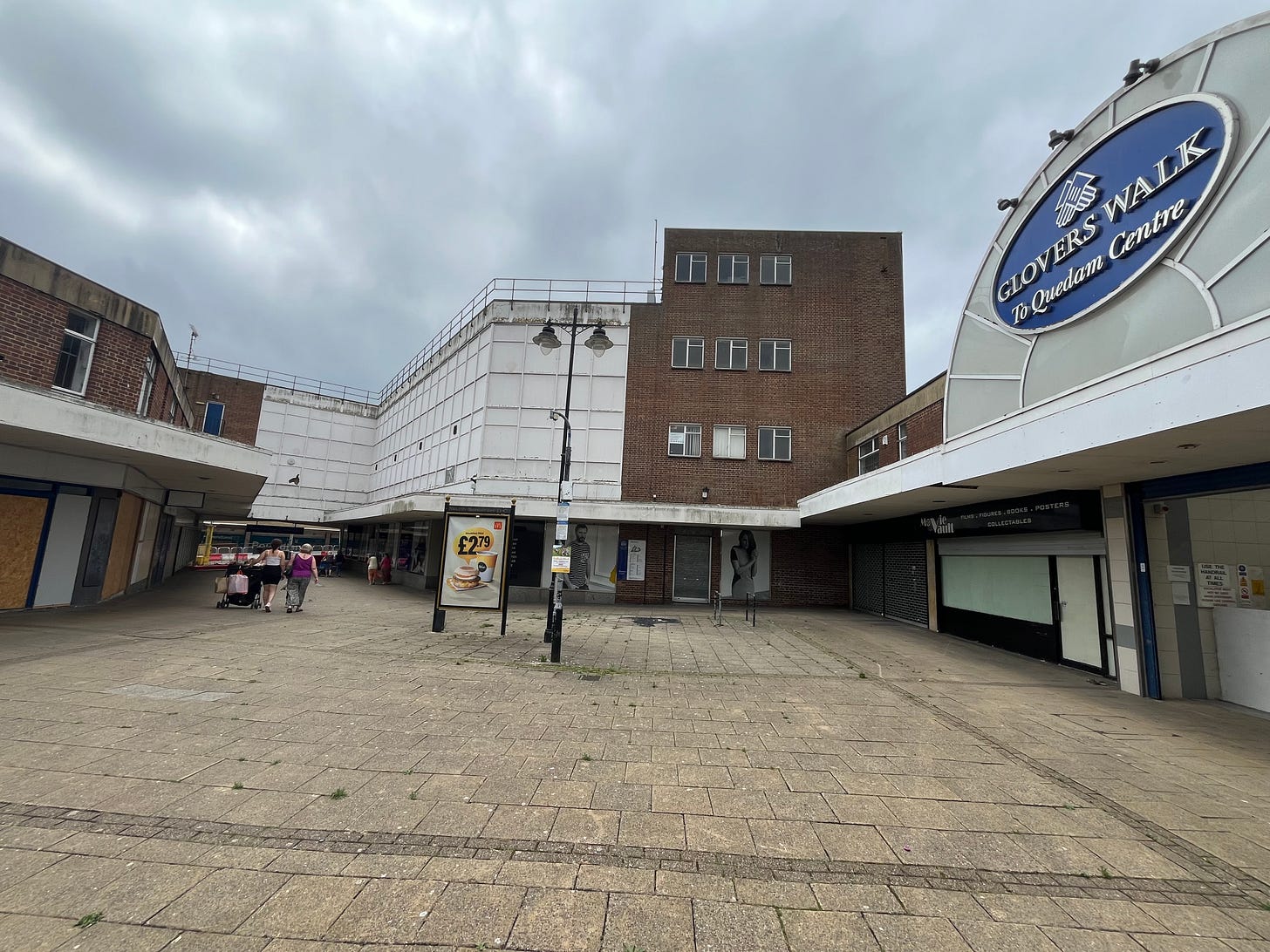
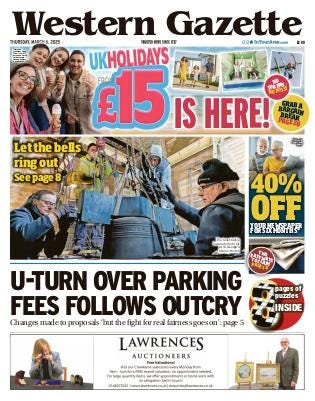
On the odd occasion I don't agree with everything you publish, but at least you go to the trouble of researching and publishing facts, this in turn sparks my grey matter, unlike the majority of journalists and especially politicians who appear to live in cloud-cuckoo-land with the memory of a goldfish.
Although credit where it's due to Cllr. Tom Deakin for the briefest 'whiff of honesty' when he acknowledged his party's role in local government funding when they were in coalition.
You might like to mention, as and when you next meet him, he could pass on some of that 'whiff of honesty' to his clown of a leader (Sub-Postmasters enquiry)!
You must cut a lonely figure in the press box at the council meetings that you attend :-0
Keep up the excellent work.
Good local journalism is so important. As budget pressures increase our politicians can succumb to weasel-speak “This is being done for your convenience.” (Ha!) “This decision has not been predetermined. (Ha!). “This approach is more holistic/sustainable” (Ha! again). It will only get worse if journalists are not watching and reporting. So thank you for your excellent and balanced work. And apologies to weasels.